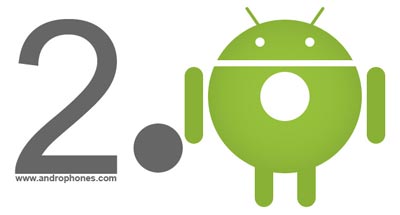While many a kind word have been said about Apple’s Jesusphone, the fact remains that for all the gloss and luster, there are some terrible failures stemming from Apple’s own fear of openness and the resulting restrictions that it has imposed on the iPhone platform. How else could you explain the absence of rudimentary features such as MMS, copy and paste, multitasking and other small but obvious omissions which have only been recently updated? In the case of multitasking, it’s still not present, although Apple has a good argument that it will drain battery life.
Nevertheless, with the background of iPhone’s struggles, Google have perfected Android, their own answer to the Jesusphone which runs exactly 180 degrees counter to the philosophies adopted by Apple. Google preached open platform development and as little restrictions as possible, in part because they understand how the nature of open source programming works and would like to tap into the power of sharing in order to slingshot their Android platform past Apple’s own.

Initially when the Android first debuted, it was only available on the HTC G1, which wasn’t a pretty looker and not that great a phone overall. However, many reviews praised the Android platform and hoped to see it available on more devices. However, a year on, Android is still greatly lacking in terms of having a killer hardware to run on. Phone manufacturers are only now starting to warm up to Android as a serious alternative on the smartphone platform.
However, it seems that things can only look up from here. Motorola’s Droid will be the first phone in the world to use Google Android 2.0, the latest smartphone OS for the Android platform and early looks on the phone shows it to be a gorgeous phone with great screen and awesome camera. Only time will reveal if the Droid will save Motorola’s phone-making division, which has seen less than stellar market impact in the past couple of years ever since they launched the RAZR.

What’s new that Android fans can expect from 2.0? The first useful feature places more emphasis on communications. Now whenever you tap on a contact’s picture, a popup menu will show listing all the possible methods of communications you can use to reach the person, be it making a phone call, sending an email, SMS and so on. This feature will be available as an easy add-on for programmers to integrate into their software, making communications easy and simple. Combined with multitasking, you can quickly and easily switch from play mode to making a call/sending SMS then resuming whatever you left off.
It is also possible to have multiple user accounts on the phone now, in addition to being able to synchronize with Microsoft Exchange servers. The camera module is also updated with support for manual zoom control, white balance, macro focus, scene mode, etc. This will be wonderful news for the Droid, with it’s 5MP camera module. Finally, the calendar app has been updated to make it more robust and user friendly. New technologies introduced include Bluetooth 2.1 and updated Media Framework to optimize the Android’s graphics system to make it more responsive and increase performance.
For developers, Android 2.0 SDK now supports multiple screen sizes, and the OS will correctly render your application regardless of the size of the screen, which can vary due to the nature of the OS and how many people are using in on their phones.
With 2.0, the bar has been raised. Will we see even greater features on Android 3.0? We will be waiting. In the meantime, I’m sure Apple will be busy working on their iPhone OS 4.0 for release when that happens.
